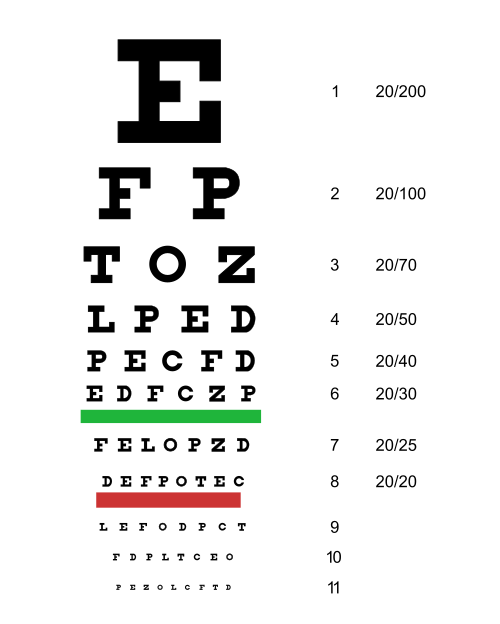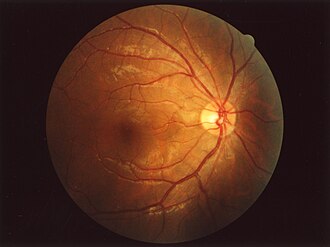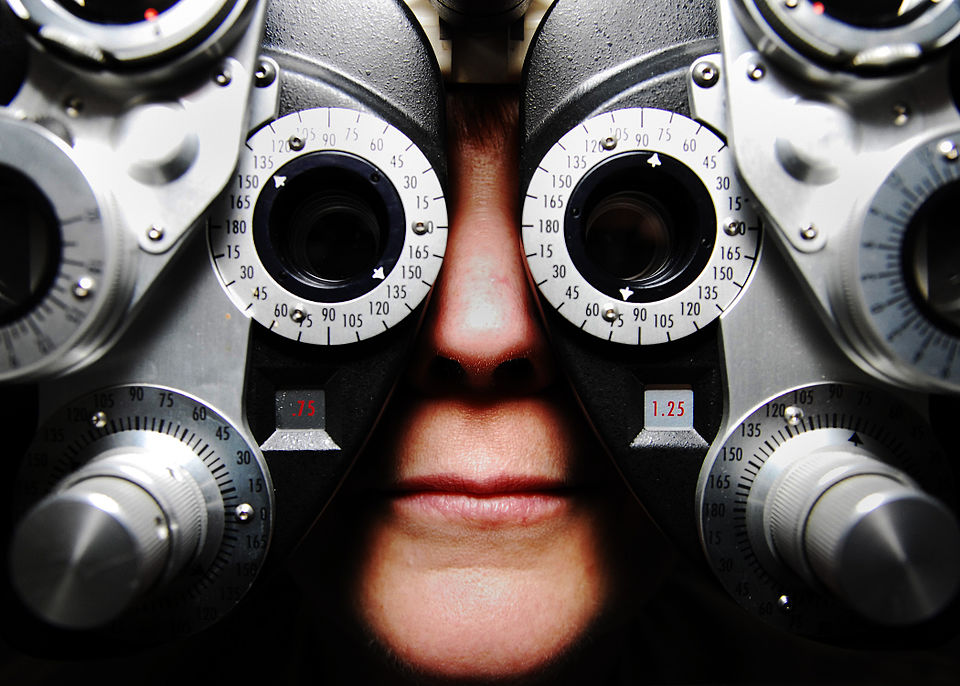Blurry Vision
also known as Blurred Vision, Vision Blurriness
Last updated August 19, 2025
Medical information on this page is for educational purposes only and is not a substitute for professional medical advice, diagnosis or treatment.
See our Terms & Conditions and Consent for Telemedicine for details.




Overview
Blurry vision means things do not look sharp or clear. You might notice it when reading, looking at a screen, or trying to see far-away objects. Blurry vision is very common and often caused by how the eye bends light (called a refractive error, like nearsightedness or astigmatism) — problems that are usually easy to fix with glasses or contacts. 1
But sometimes blurry vision can be a warning sign of a more serious eye or health problem, and it should be checked by an eye specialist.
Get urgent help if your blurry vision starts suddenly, comes with severe eye pain, you see flashes and floaters, or you also have symptoms like weakness on one side, trouble speaking, or a severe headache. These can be emergencies where quick care can protect sight and health. 2
Symptoms
Blurry vision can look and feel different from person to person. Common clues include:
- Everything looks slightly out of focus, hazy, or smeared — either all the time or after long screen use.
- Trouble reading small print or seeing road signs clearly.
- Burning, dryness, or a gritty feeling with fluctuating blur (often dry eye).
- Blurry vision that improves when you blink or rest your eyes.
Red flags — call or go now:
- Sudden blur in one eye, a dark “curtain” over part of your vision, new flashes of light, or a shower of floaters — these can be signs of retinal detachment and need same-day care. 3
- Blurry vision with zigzag lines or shimmering lights may be a migraine aura; if it’s your first time, lasts over an hour, or comes with stroke-like symptoms, get medical help right away. 4
Causes and Risk Factors
Many things can cause blurry vision. Some are minor and easy to treat; others are more serious. Common causes include:
- Refractive errors: nearsightedness, farsightedness, astigmatism, or presbyopia — caused by light not focusing correctly on the retina. Usually corrected with glasses, contacts, or surgery.
- Dry eye disease: can make vision fluctuate and feel scratchy or tired.
- Cataracts: a cloudy natural lens causing glare and blur that build slowly with age. 6
- Diabetic eye disease (retinopathy): can cause swelling in the retina and blurred or wavy vision. 5
- Neurologic causes: migraine aura may cause temporary shimmering lines, zigzags, or blind spots.
Other contributors: eye infections, inflammation, medication side effects, over-wearing contacts, and systemic conditions like high blood pressure.
Enter your details in the following fields to calculate your risk
Risk Level
Recommendation
Diagnosis
An eye care professional will start with your story: when the blur began, whether it is constant or comes and goes, whether one or both eyes are affected, and any pain, redness, or headache.
A typical exam may include:
- Vision and refraction testing: eye chart and phoropter to find best correction. 1
- Slit-lamp exam: checks for dryness, inflammation, or cataracts.
- Eye pressure check & dilation: essential if retinal detachment is suspected. 3
- Imaging/blood tests: OCT scans, fundus photos, or labs if systemic disease suspected.
Treatment and Management
Treatment depends on the cause. Options include:
- Refractive errors: glasses or contacts; some may qualify for laser surgery.
- Dry eye: artificial tears, warm compresses, eyelid hygiene, screen breaks; sometimes prescription drops or procedures. 7
- Cataracts: outpatient surgery replaces cloudy lens with clear implant. 6
- Diabetic eye disease: control sugar and BP; may need anti-VEGF injections or laser.
- Retinal detachment: emergency — requires same-day evaluation.
- Migraine aura: rest, hydration, neurology care if prolonged or stroke-like.
Living with Blurry Vision and Prevention
Helpful habits:
- Follow the 20-20-20 rule for screens (every 20 minutes, look 20 feet away for 20 seconds).
- Use artificial tears if eyes feel dry; humidifiers and warm compresses can help. 7
- Wear sunglasses outdoors and protective eyewear for sports/yardwork.
- Keep diabetes, blood pressure, cholesterol under control; attend all eye exams. 5
- Use contacts safely: clean properly, don’t overwear, and remove if painful/red.
- Schedule routine comprehensive exams even if vision seems fine. Many diseases are silent early.
Latest Research & Developments
New tools are helping doctors catch sight-threatening causes of blurry vision sooner. For example, AI systems are being tested to screen for diabetic retinopathy in primary care.
A National Eye Institute review found that while some AI programs show promise, only a few matched human expert performance in real-world testing, and oversight is still important. 9
At home, simple self-checks like the Amsler grid may help people with macular problems notice changes, but these do not replace regular dilated eye exams. Ask your specialist which monitoring tools make sense for you.
Recently Published in Peer-Reviewed Journals
BMC ophthalmology
August 1, 2025
Case of autosomal dominant optic atrophy with relatively good visual function.
Tachibana M, Hayashi T, Igawa Y, et al.
JAMA ophthalmology
July 17, 2025
Corneal Clouding in a 74-Year-Old Man.
Nesemann JM, Nagy MA, Schallhorn JM
BMC ophthalmology
July 9, 2025
Central Retinal Vein Occlusion (CRVO) complicating post-cataract surgery: a case report and multifactorial analysis.
Xiaodong L, Xin L, Xuewei Q, et al.
Next Steps
Seek care the same day if you suddenly develop blurry vision, have eye pain/redness, or see flashes/floaters with a dark curtain. Otherwise, book an eye exam soon.
Who to see: Ophthalmologists handle medical and surgical eye conditions; Optometrists provide exams, glasses/contacts, and refer when needed.
How to schedule:
- Call your clinic and explain symptoms; ask if you qualify for an urgent slot.
- If routine appointments are far out, request a cancellation/waitlist spot.
- If insurance requires, ask primary care to send a referral while booking.
You can also connect with an eye specialist on Kerbside for a fast consult (note: this is not a patient–physician relationship).
Trusted Providers for Blurry Vision

Dr. Connie Wu
Specialty
Glaucoma
Education
The Warren Alpert Medical School of Brown University

Dr. Dane Slentz
Specialty
Oculoplastics
Education
Oculoplastics

Dr. Emily Eton
Specialty
Retina/Vitreous
Education
Harvard Medical School

Dr. Emily Schehlein
Specialty
Glaucoma
Education
Glaucoma

Dr. Grayson Armstrong
Specialty
Retina/Vitreous
Education
Ophthalmology

Dr. Jose Davila
Specialty
Retina/Vitreous
Education
Retina/Vitreous Surgery

Dr. Karen Chen
Specialty
Glaucoma
Education
Glaucoma

Dr. Levi Kanu
Specialty
Cornea and External Disease
Education
Cornea and External Disease

Dr. Nicholas Carducci
Specialty
Retina/Vitreous
Education
University of Pennsylvania Perelman School of Medicine